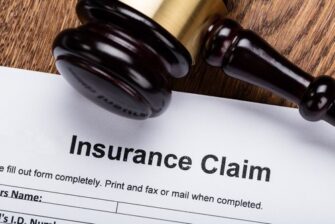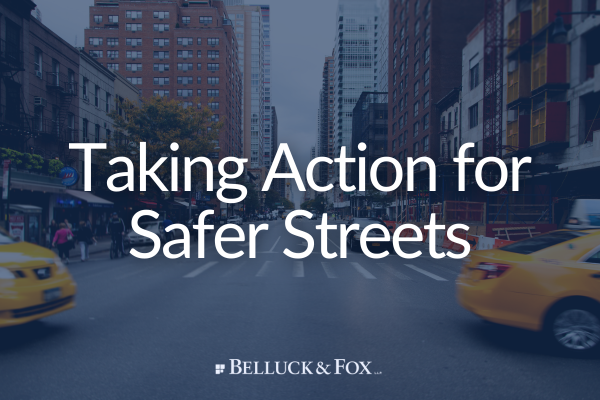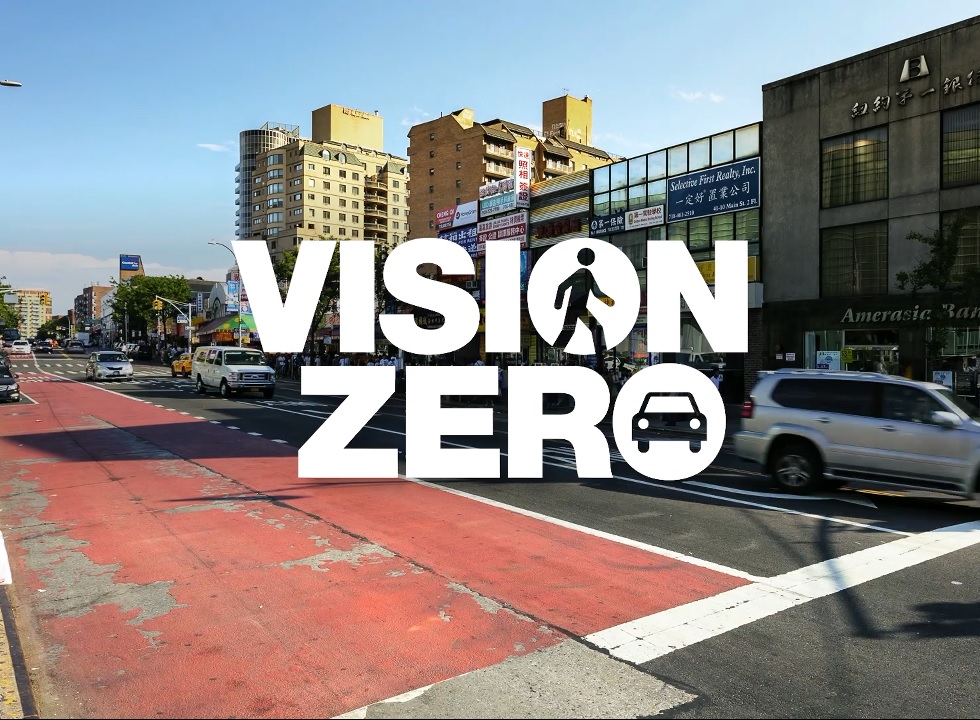Complete Guide to New York’s Driver and Family Protection Act

Before this year, you and your family might have been on the hook for expensive damages and medical costs if involved in a crash with an uninsured driver. But New York’s Driver and Family Protection Act changed all that.
Now motorists automatically gain supplemental insurance coverage as part of any new auto insurance policy, which they can reduce or decline if they so choose. Here’s how this legislation turned New York’s drivers into better informed — and better protected — consumers.
Coverage That Protects You the Same Way It Protects Others
Table of Contents
We all know how automobile insurance should work. It’s supposed to protect us if we’re unfortunate enough to get into a motor vehicle accident, either by paying for the other driver’s repairs and medical expenses if we’re at fault or by compensating us for those repairs and expenses if we’re not.
New York State law says that motorists must carry liability insurance for at least these minimum amounts:
- $25,000 for bodily injury to one person
- $50,000 for bodily injury to all persons
- $10,000 for property damage
But what if the driver who’s at fault doesn’t have car insurance — or enough liability coverage?
That’s not so unusual. The Insurance Research Council estimates that one out of every eight drivers on the road in the United States in 2015 was uninsured.
So, as added protection, New York motorists are required to purchase mandatory Uninsured Motorist (UM) coverage, which pays for bodily injury subject to the same minimums outlined above. If you want more coverage, you also could purchase additional Supplementary Uninsured or Underinsured Motorist (SUM) coverage. The limits for SUM coverage are higher, payable at least up to the same bodily injury liability limits of your own auto insurance policy.
Unfortunately, many New York motorists were either unaware of SUM coverage or had no idea that it was optional.
Without requesting it as part of their auto insurance policies, they found themselves able to recoup only the UM minimums for their medical expenses and property damage when involved in a wreck with an uninsured driver.
For a single injured person, such as a Staten Island man whom a drunken driver struck in 2012, that meant just $25,000 toward his hospitalization and rehabilitation, even though he and his wife had responsibly bought $100,000 in liability coverage for others.
Gov. Andrew Cuomo signed the Driver and Family Protection Act, which received bipartisan support, in December 2017. It amended the current insurance statute so that auto insurance policies entered into after June 18, 2018, automatically include SUM coverage equal to the bodily injury liability coverage purchased.
What Are the Benefits?
 The greatest benefit is peace of mind. For any new automobile insurance policy entered into after June 18, 2018 (the amendment’s effective date), SUM coverage is automatically included in an amount equal to the bodily injury liability coverage purchased.
The greatest benefit is peace of mind. For any new automobile insurance policy entered into after June 18, 2018 (the amendment’s effective date), SUM coverage is automatically included in an amount equal to the bodily injury liability coverage purchased.
This means you can recover more toward your medical expenses and damages once the at-fault driver’s insurance has been exhausted, if he or she has any.
Let’s say you’re involved in a crash with an at-fault driver who has $25,000 of liability coverage. With $100,000 SUM coverage on your own policy, you can recover up to $100,000 toward your expenses: $25,000 from the other driver’s policy, plus $75,000 from your SUM coverage.
If you have the same $100,000 SUM coverage and are involved in a wreck with an uninsured at-fault driver, your SUM policy will compensate you.
SUM coverage also handles your expenses in a hit-and-run situation, where even if the other driver has insurance, he or she isn’t around to contact.
What’s more, the coverage protects you if you’re riding a bicycle, if you’re a pedestrian, or if you’re traveling or driving in a car that’s not your own.
What Are the Negatives?
As we’ve noted, the Driver and Family Protection Act applies only to new policies entered into after June 18, 2018 — not existing policies renewed after that date.
If you have an older policy, you must talk to your insurance company about adding SUM coverage.
If you do not want SUM coverage, or if you want to purchase it in limits lower than your policy’s bodily injury liability limits, you must tell your insurer this in writing or by signing an electronic waiver. However, the insurer has the option to require such equal coverage, anyway — or to provide SUM coverage in an umbrella or excess liability policy.
The Driver and Family Protection Act expires automatically on June 30, 2020, unless the New York State Legislature decides to extend it.
How Does It Work?
If you’re saying to yourself, “But I thought New York was a no-fault state,” you’re right. “No fault” means that your own insurance coverage first pays your medical expenses and reimburses you for lost income — regardless of who is determined to be at fault in a collision — unless you meet a “serious injury” threshold. That limits your maximum compensation to $50,000 for all medical treatment, lost earnings, and certain accident-related expenses.
You can file a claim outside the no-fault system — and tap into your SUM coverage if necessary — if your injuries meet certain requirements, resulting in one of the following:
- A fracture
- Significant disfigurement
- Significant limited use of a bodily function or system
- Permanent loss of the use of a bodily organ, member, system or function
- Permanent consequential limitation of the use of a bodily organ or member
- Dismemberment
- Loss of a fetus
- Death
A “serious injury” also includes any medically determined injury or nonpermanent impairment that prevents the injured person from performing customary daily activities for at least 90 days immediately after the injuring incident.
Under the “serious injury” threshold, you can seek damages above $50,000 to cover a variety of expenses, including lost income and medical bills. That’s where you could tap into your SUM coverage if the at-fault driver doesn’t have enough liability insurance, has no insurance or can’t be found.
Whether you add SUM coverage to your current policy or enter into a new policy where it’s automatically included, this provision gives you one less worry after a car crash.
How to Deal with Your Insurance Company After an Injury
Even if you have the nicest insurance agent, an insurance company will try to minimize the amount of damages it pays to someone who is hurt in an accident. Insurance is a business. So it’s wise to focus on your own care while protecting yourself from anything that might delay or deny your compensation.
First, make sure that you call the police to establish the facts of the crash.
Then, see a doctor right away. Some injuries are immediately obvious. However, injuries that affect the joints, muscles, spine and internal organs can take days or weeks to manifest. Minor soreness, stiffness, body aches or numbness can mask something more serious, such as an injury to the head, neck or back.
Your insurance coverage is meant to help protect you, your family and your passengers. So it’s to your benefit to be as thorough and as accurate as possible in relating any injuries.
If possible, gather the contact information of any witnesses and use your cellphone to take photographs of the scene, the positions of the involved vehicles, any property damage, skid marks and the road conditions.
Although police also take photographs and collect witness information, it’s helpful for your insurance claim — and any legal action you might pursue — to have your own records as well. (Photographs also can come in handy if any driver moves a vehicle to avoid blocking traffic before the police arrive — or leaves the scene altogether.)
Upon contacting your insurance company, stick to the basics: when and where it happened, and who was involved.
If an insurance company representative asks, “How are you?” be polite, but save the medical talk for a physician. Don’t give a recorded statement, and don’t admit fault. Say that you’d like to be examined by a doctor to be sure that you’re all right, even if you’re not whisked away to a hospital.
Let Our Experienced Car Accident Attorneys Help You
At Belluck Law, we have a dedicated team of skilled auto accident attorneys who not only know the law but are sensitive and respectful of our clients’ circumstances. If you or a loved one has been seriously hurt in a crash with an uninsured or underinsured driver, please call us for a free consultation at (212) 681-1575, or contact us online to schedule a time to talk.
Our highly respected personal injury law firm serves accident victims across New York, and we stand ready to help you now.




